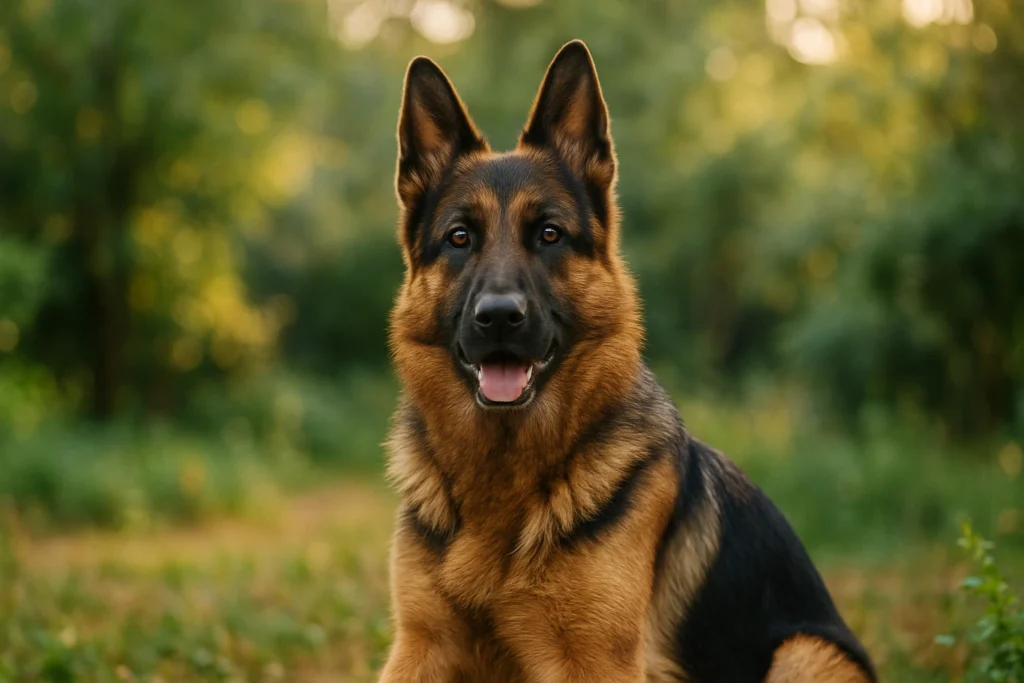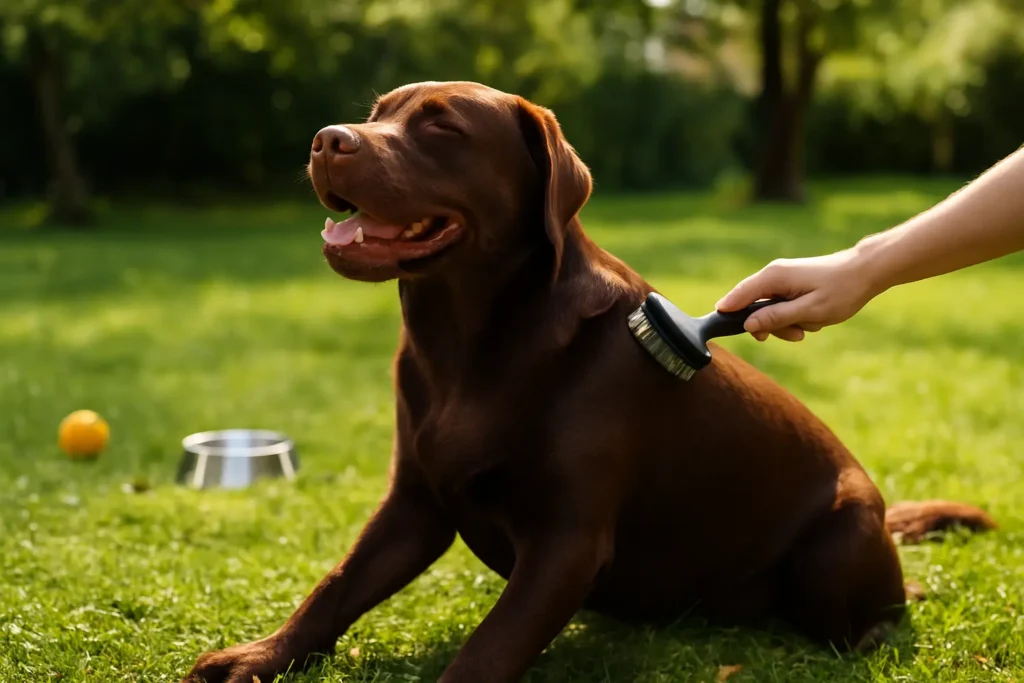Bringing a German Shepherd into your home is more than just adding a pet—it’s beginning a lifelong partnership. These dogs are brilliant, loyal, and endlessly curious. But they also come with specific needs that set them apart. Whether you’re a first-time dog owner or you’ve raised a few pups before, here are 10 essential things to consider before welcoming a Shepherd into your life.
1. They’re Brilliant—Why You Should Know German Shepherd Personality Traits
German Shepherds are widely recognized as one of the smartest dog breeds—meaning they can learn quickly, adapt fast, and often surprise you with their resourcefulness. But intelligence can be a double-edged sword. Without mental stimulation, they may resort to destructive behaviors out of boredom or frustration.
Key Traits:
- Quick learners: Easily pick up commands and routines.
- Problem-solvers: They find ways to open doors or access forbidden items.
- Emotional intelligence: They read your mood and react accordingly.
How to Harness This Intelligence:
- Short, engaging training sessions: Try 5–10 minute drills like recall, walk on loose leash, or sit-stay rotations multiple times a day.
- Puzzle toys and hide-and-seek games during alone time.
- Advanced dog sports: Enroll in obedience, agility, tracking, or herding activities.
Takeaway: Their brain needs feeding as much as their body does.
2. German Shepherd Shedding & Grooming: Prepare for a Fur Storm
German Shepherds shed year-round, with intense ‘blow-outs’ twice yearly (usually spring and fall). This means daily brushing during shedding seasons and weekly maintenance outside of them.
Grooming Essentials:
- Brushing Routine: 3–4x per week routinely; daily with a deshedding tool during heavy shedding.
- Bathing: Every 6–8 weeks (or when needed).
- Nail trims & paw care: Every few weeks to prevent overgrowth.
- Ear checks & teeth brushing: Weekly checks and daily brushing.
Home Care Tips:
- High-powered vacuum or robotic vacuum recommended.
- Lint rollers are life-savers.
- Keep washable covers on furniture and beds.
Takeaway: Be prepared to become best friends with your brush.
3. Exercise Requirements: German Shepherds Need 1.5–2 Hours Daily
Born as working dogs, German Shepherds thrive on physical activity. A daily regimen of 90–120 minutes of exercise is essential to maintain their health and happiness.
Daily Exercise Routine:
- Early morning walk (30–45 mins) — great for starting the day.
- Evening walk or play session — fetch, tug, or park visits.
- Mental workouts — puzzle feeders, obedience drills, sniffing games.
Weekend Adventures:
- Hiking trails
- Beach runs or lakeside swims
- Playdates at dog parks
Effects of Under-Exercise:
- Restlessness and anxiety
- Destructive behaviors (chewing, barking, digging)
- Weight gain and health issues
Takeaway: A tired German Shepherd is a happy, well-behaved one.
4. German Shepherd Loyalty & Emotional Bonding You’ll Feel Deeply
German Shepherds bond deeply with their families. They’re not content to be left alone—they want to be by your side, both physically and emotionally.
Signs of Deep Bonding:
- Follows you room-to-room
- Waits for you at doors
- Sensitive to your mood and behaviors
Avoiding Separation Anxiety:
- Desensitization: Practice short absences and gradually lengthen time away.
- Comfort items: Toys, blankets, or clothing with your scent.
- Professional help: If anxiety signs persist, consult a trainer or behaviorist.
Takeaway: This is a breed that thrives on connection—prepare to share your days.
5. Protective Instincts: German Shepherd Guarding Instincts Explained
German Shepherds are natural protectors. Their strong guarding instinct is a core part of their identity, but without proper training, it can escalate into over-guarding.
Managing Protective Behavior:
- Early socialization: Introduce a variety of people, animals, and environments in a positive way.
- Authority structure: Establish yourself as a calm, confident leader.
- Obedience training: Reinforce ‘leave it’, ‘off’, and ‘calm’ commands.
When to Seek Help:
- Overreacting to strangers
- Excessive barking
- Difficulty relaxing during social encounters
Takeaway: With the right guidance, their protective side becomes a strength—not a liability.
6. Why Training a German Shepherd Is Essential
Training isn’t optional—it’s a necessity for a German Shepherd’s balanced growth. Their intelligence demands structure, clear rules, and consistent practice.
Want a deeper look at whether this breed is a good fit for your first dog? Check out our guide: Are German Shepherds Good for First-Time Dog Owners?
Training Guide:
- Obedience classes: Start early; even adults benefit from group training.
- Tools to use: Use clickers, kibble rewards, and praise.
- Common pitfalls: Be patient and consistent—avoid skipping steps or repeating mistakes.
House Training Essentials:
- Puppyproof the home with gates and crating.
- Set a strict schedule: 6–8 trips outside daily until fully house-trained.
- Use vocal cues and rewards for successful potty breaks.
Takeaway: A well-trained dog is a happy family member—training builds partnership and harmony.
7. Health Concerns Every German Shepherd Owner Should Know
This breed is generally healthy but has predispositions you should watch for:
- Hip & elbow dysplasia
- Degenerative myelopathy
- Gastric torsion (bloat)
- Allergies (skin or food)
- Exocrine pancreatic insufficiency
Preventative Care:
- Choose a reputable breeder: ask for health certification.
- Maintain healthy weight to avoid joint strain.
- Feeding habits: multiple smaller meals, slow bowls.
- Annual vet check-ups after age 2.
Takeaway: Proactive care and regular vet visits help catch issues early.
8. Feeding a German Shepherd: Balanced Diet Tips
A high-energy, athletic breed like the German Shepherd needs a well-rounded, high-quality diet:
Feeding Guidelines:
- Puppies: 3–4 meals/day with growth-focused formula.
- Adults: 2 meals/day.
- Seniors: Adjust portions and protein for slower metabolisms.
Nutritional Requirements:
- 22–32% protein, quality animal sources
- Balance carbs/fruits/vegetables
- Joint support supplements (glucosamine)
- Hypoallergenic or grain-free options if needed
Weight Management:
- Treats ≤10% of daily calorie intake
- Portion control during puberty to protect joint health
Takeaway: Their diet fuels everything—growth, play, and longevity.
9. Lifestyle Compatibility: Is a German Shepherd Right for You?
German Shepherds thrive in active households. They’re not suitable for everyone.
Ideal Matching Lifestyles:
- Owners with flexible time
- Homes with a yard or safe outdoor space
- People who enjoy exercise, hiking, or training
Less Suitable Environments:
- Small apartments without daily outdoor time
- Long workdays without reliable dog care
- Low-energy owners
Adjustments You Can Make:
- Doggy daycare or sitter for long workdays
- Regular dog walkers
- Interactive indoor games and training
Takeaway: Match your dog’s energy—not just your heart shape.
10. Cost of Owning a German Shepherd: Vet Care & Expenses
German Shepherds bring joy—and financial commitment.
Estimated Monthly Costs:
- Food: ₹2,500–₹5,000+
- Grooming & supplies: ₹500–₹1,200
- Training & toys: ₹800–₹1,500
Annual Vet & Care Expenses:
- Vaccinations + checkups: ₹3,000–₹7,000
- Parasite prevention: ₹1,500–₹3,000
- Pet insurance: ₹5,000–₹15,000/year
Emergency Costs:
- Bloat surgery: ₹10,000–₹30,000
- Orthopedic surgery: ₹20,000–₹50,000+
- Specialist care: ₹3,000–₹12,000 per session
Takeaway: Factor pet costs into your budget for responsible planning.
Bonus Section: Real-Life Owner Experiences
Luna’s Anxiety Turned Confidence
“Luna had panic when I left. With daily puzzle toys, short departures, then longer, she became confident and calm.”
Ved & His Trail-Happy Owner
“My Shepherd Ved and I hike daily—he’s a different dog when we skip it.”
Battling Allergies with Better Shampoo
“One quality hypoallergenic shampoo changed my Shepherd’s coat health entirely.”
Are You Really Ready?
Ask yourself:
- Time: Can I invest 2 hours daily in exercise, grooming, training?
- Mental presence: Am I okay with having a dog shadow?
- Household: Are we active? Do we have a pet-safe area?
- Finances: Can I handle food, vet care, emergencies?
- Commitment: Am I ready for a 10–14-year bond?
If your answer is a determined “Yes,” then you’re likely ready… but there’s one more thing.
What to Do Next
Step 1: Meet a Few
Visit breeders, meet-rescue volunteers. Let the dog choose you. Notice energy level, confidence, interest in people. Observe how it responds to you.
Step 2: Start Your Toolbox
Line up a trainer, choose your vet, buy top-grade brushes, reasoned kibble, a structured leash, and a comfy crate.
Step 3: Prepare Your Home
Safe space—no choking hazards—gate off stairs/pool/hazard zones until obedience routines are solid.
Step 4: Plan the First Two Weeks
Schedule: wake/walk/feed/equipment check/training/play/rest. Repeat. A calm, consistent rhythm is the best welcome gift you can give.
Final Thoughts
A German Shepherd is more than impressive looks and intelligence—it’s a life change. If you match their energy with your attention, their smarts with your guidance, and their loyalty with your love, you’ll discover an unbeatable bond. Every command becomes a shared code of trust. Every walk is a partnership. Every moment is a choice to love deeply.
Your Shepherd won’t just be a dog—they’ll be your teammate for years to come. And like every great team, it takes readiness, teamwork, consistency—and yes, some fur.




